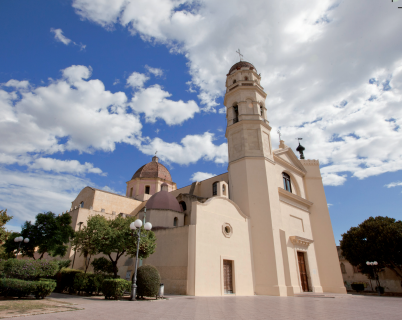With its seventy thousand inhabitants, Quartu Sant’Elena is the third most populous municipality in Sardinia, after Cagliari and Sassari.
Until the 1960s, economic life was centered mainly on agriculture-still appreciable today, the Sa Dom’e Farra House Museum and the former Montegranatico-, handicrafts and salt mining. Then, rapid building and population expansion in a few decades transformed the quiet rural village into a city, the development of which also affected the coastal strip.
Numerous nuraghi are reported in the municipal area, almost all of which were built to guard the passes in the direction of the sea. The best known and most investigated is the Diana, located about 100 meters from the sea, in a dominant position on the granite promontory called ‘Is Mortorius’. The ruins of a military fort built during World War II also insist on the monumental building today.
Phoenicians and Romans settled at key points in the territory, colonizing the original population, which lived near the coastal marshes. The city’s present name in fact originates from the milestone placed to mark the fourth mile of the Roman road that led from Cagliari into the interior of the island. In the coastal littoral the remains of the Roman Villa, dating from the Imperial period (3rd-4th centuries AD), can be visited, with rooms of a quadrangular plan, medium to small in size, partly submerged.
The Byzantines, who arrived in later centuries, also left a considerable cultural legacy. However, the present urban structure of the historic center broadly traces the ‘spindle’ structure established in the medieval period.
Island events brought the village under Catalan, Spanish, Austrian and Piedmontese rule. And in 1793, on the Quartu coast, an attempted landing and invasion by the French army under the orders of Admiral Troguet was heroically stopped by local militias.
In 1959 the title of ‘city’ was officially recognized by the Italian Republic; to avoid confusion with homophonic localities in the national territory, the place-name Quartu was added to the name of the patron saint, St. Helen, to whom the Basilica is dedicated, the result of a radical remodeling of the previous layout, which took place between 1780 and 1828, after a fire in 1775 had severely damaged the church. The only part of the ancient building that still exists today is the Oratory of the Rosary, dating from the early decades of the 17th century and used as a parish museum.
Other buildings of worship in the city include Santa Maria di Cepola, Sant’Efisio, Sant’Agata, with the adjacent Former Capuchin Convent, San Pietro di Ponte and Nostra Signora del Buoncammino.


